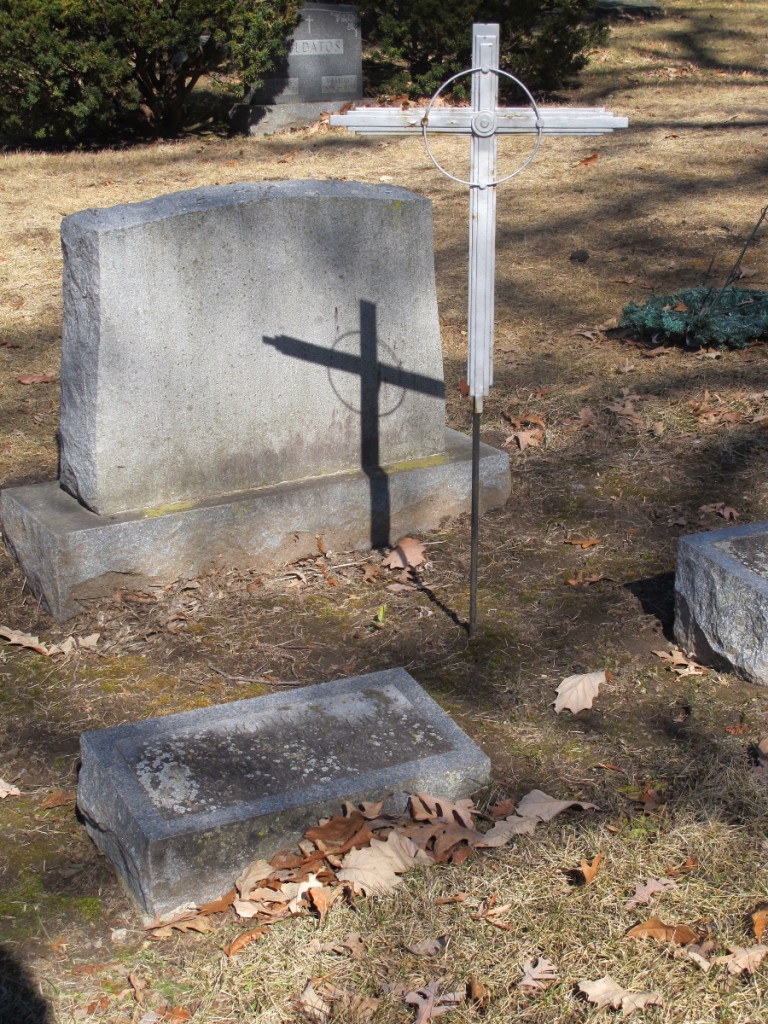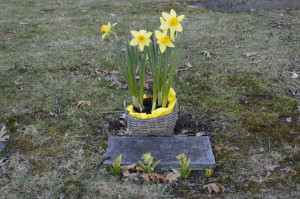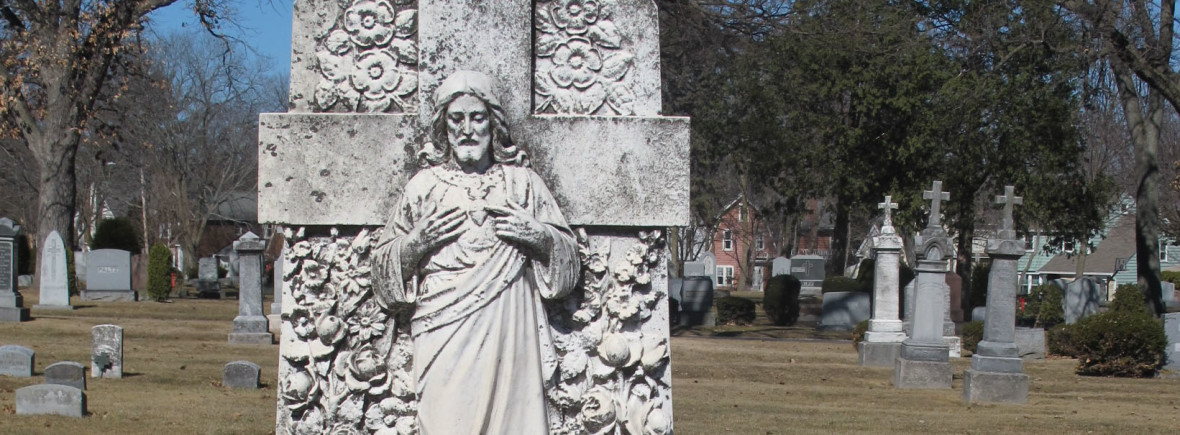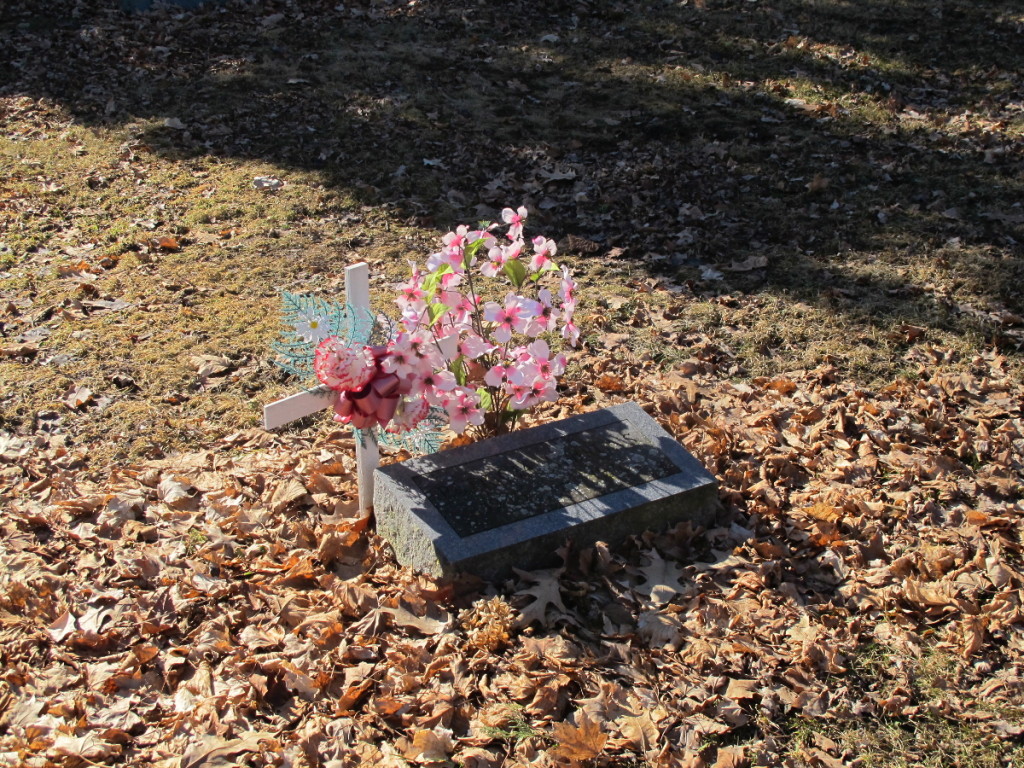Catholic and Lutheran Traditions
From a Christian perspective, how a body is disposed does not affect the afterlife or final resurrection of the deceased. One might wonder then, if the corpse of a Christian person might be buried in any place or way, why would a cemetery be important at all for Christians? Two answers come to mind. First, a cemetery might serve a peaceful place of rest until the day of final resurrection, and second, it is important as a place of remembrance, a space of reverence of the memory of loved ones.
In the Christian tradition, salvation is possible only through Jesus. In the beginning of time, according to Christianity, God, with infinite love, created a perfect world for humans. They, renounced to that world through their sins but God mercifully gave humans a second opportunity to live forever in perfect happiness by sending Jesus to grant everyone salvation. In consequence, most Christian groups belief that anyone who follows Jesus attains salvation. The way in which one should follow Jesus is by following the sacraments, participating actively in the Church community, and loving and helping fellow humans. Similarly, Christian cosmology is defined by Jesus, by his return to Earth for the final resurrection when the whole world will be renovated. In this sense Christian cosmology is a temporal cosmology.
A common way in which this temporal cosmology is laid out in most Christian cemeteries is through its orientation. Many Christian cemeteries are oriented towards the East, and the dead are buried with their feet pointing towards the East as well. This is explained cosmologically in the sense that the rising of the sun represents the resurrection of Christ; another explanation is that cemeteries are pointing towards Jerusalem (which from a European perspective is located in the East) in preparation to receive Jesus, who will reappear in Jerusalem. In addition, Christianity has an experiential cosmology given by by the closeness to and the experience of the grace of God, which is explained mainly through the ideas of Heaven and Hell.
Below you will find more information on how these shared Christian beliefs express themselves differently in a Catholic and a Lutheran burials. We have chosen Lutheran burials to do this comparison because this tradition is dominant in Wisconsin.
The information of this page is built upon interviews with Reverend Brad Pohlman (Lutheran Memorial Church), Father Mark Miller (St. Paul Church), as well as the UW Madison Professors Dr. Charles Cohen, and Dr. Ulrich Rosenhagen.
Catholic traditionS
This section is relevant for the few Catholic graves in Forest Hill cemetery and especially useful if you want to visit Resurrection cemetery, which is located across the street from Forest Hill. From a Catholic perspective, a cemetery, apart from being a place for peaceful rest until resurrection, is a holy ground because the remains of all Catholics become sanctified through God’s grace. In this way, the participation of the sacraments and a life lived through Christian morals infuses the body with grace and prepares the body for resurrection. As part of being consequent with that belief, Catholics are discouraged from cremation after death and from scattering the remains of a loved one or saving them within the household. Instead, they are actively encouraged to bury their dead at a cemetery, which, in this view, is a space consecrated to demonstrate reverence for the holiness of the event of resurrection, and of the remains. It is important to notice, that the belief that God’s grace impacts the material world and transforms it through the sacraments is key to understanding how a Catholic might see a cemetery.
Likewise, the belief that saints, priests and loved ones can intercede for us before God in a certain way also leaves a material trace in a Catholic cemetery space. For example, the image of a saint on gravestones is a clear sign that you are looking at a Catholic burial. Father Miller explains that Catholics believe that because saints are closer to God, their prayers can better help people persevere in their faith, and hence help them to attain salvation. Importantly, the belief is not that saints will change the afterlife of a person, but that they can help people to participate in the life of Jesus, which is the only thing that can grant salvation. Similarly, but not so powerfully, the prayers of family and friends can also be of help to persevere during life and also after death during the experience of purgatory, which is the experience of purifying and preparing oneself to enter to Heaven. The belief of the possibility of experiencing purgatory also distinguishes Catholic tradition, and it seems that this possibility gives saints and family the opportunity of being a support after death. This belief has importance within a Catholic cemetery space because people decides to put figures of saints on their gravestones because saints can give Catholics support during the experience of purgatory .
Related to that agency, the celebration of All Saints Day and All souls Day are of importance in Catholic commemoration of the dead. All Saints Day, on November the 1st, is the day in which Catholics honor the lives of all saints and pray for their intercession for all souls going through the experience of purgatory. The next day, November 2, is All Souls Day, which is a special date for the remembrance of the dead, and it is traditional for Catholic families to visit the cemetery on this day to pray for the souls of their family members who have passed away. In countries with Catholic presence this festivity takes different shapes. For example, in Latin America—where Catholic beliefs have blended with indigenous beliefs—there are big and colorful celebrations for what is usually called “the Day of the Dead.” As part of these celebrations, families gather in cemeteries to pray for their loved ones whom have passed away, to eat with them, and accompany them. This particular way of commemorating the death and acknowledging the community of Christian souls, is actually based on a different view of who is a saint and what is his/her role in the life of Catholic. More often than not, in Latin American communities (as well as in some Eastern European communities), a saint is a miraculous being that protects us, and who is able to modify our life and afterlife through miracles. In Madison, it is possible to find celebrations of “the Day of the Dead” held by Mexican and other Latin American communities, though not at the cemetery. This might be because the ancestors are not in that particular cemetery or to avoid breaking the rules of cemetery. For example, in 2014 for “the Day of the Dead” there was a candle procession, dance, music, food and other celebrations at the Edgewood College Gallery, and the presentation of the film “Life and the Dead” at the Marquee Theater Union South at UW Madison. These commemorations join with the quiet visits to the cemetery, and both show the importance of the community of Christian souls and their influence after death as a remarkable feature of the way Catholics relate to sacred space and time.

In Catholic tradition a guardian angel is “assigned” to every person when they born to protect them. This angel guards the grave of Leda at Resurrection cemetery. Photo by Gioconda Coello
Priests, in the same way as saints, cannot alter the afterlife of people, but greatly influence the participation of Catholics in the life of Jesus, which is the only way to attain salvation. In Catholicism it is believed that through apostolic succession, a priest is directly linked to Jesus and holds—because of this link—the ability and responsibility to carry out the holy communion. It is through the liturgy that one participates in the life of Jesus and ensures salvation after death. A priest can also forgive certain sins that otherwise would require purification in the experience of purgatory before the deceased be able to enter Heaven. Thus, even though a priest does not confer salvation, he provides the means for the person to ensure it. In this way, a priest can be considered of great influence in the life and afterlife of a believer.
Angels, unlike saints and family, do not help us after death. Angels are believed to have the mission of guarding over people only during life, and Catholics would pray to their guardian angels to ask for protection and guidance. However, even though, the relationship between the souls and angels after death it is not clear, it is common to find the figure of a guardian angel on Catholic gravestones.
It seems that two main beliefs characterize the way in which Catholics see a cemetery. On the one hand, the belief that God’s grace impacts the material world and transforms it through the sacraments infuses the remains of the faithful with holiness and makes the cemetery a holy place in itself. On the other hand, the possibility of saints and family affecting the afterlife of loved ones marks the cemetery space with characteristic symbols and rituals. You can see this in Forest Hill through the symbols on gravestones.
lutheran tradition
In the interviews with Reverend Pohlman and Father Miller—members of the Christian community of Madison—they both expressed the belief that the space of a cemetery is experienced in the same way by all Christians. However, in Lutheran tradition, as opposed to Catholic tradition, there is no attribution of sacredness to the remains. Instead, what is thought to be sacred of a cemetery space is its function of remembrance. It is true that for Lutherans, in the same way that for most Christians, a cemetery is important as the space from which a person will rise in the day that Christ returns to establish His rein, and waiting for that resurrection could in fact happen in any place; but because of a human need to reconnect to one’s ancestry, the community sets aside a place for remembrance and for thanksgiving in the hope of the day in which their loved ones will be more than a memory.
Reverend Pohlman explained that one of the important ways in which the remembrance of the dead is understood for most Lutherans is through the idea of “the great cloud of witness.” This cloud of witness makes reference to all the faithful Christians, who have gone before the present generation and who, even though they are no more, still remind people of the importance of a life of faith. Lutherans would not pray to saints, as Catholics do, since they do not believe saints can intercede for them. Most Lutherans, nevertheless do recognize saints as examples to follow, and celebrate the Day of All Saints on November 1.
The Day of All Saints is actually the biggest celebration of remembrance of the dead in most Protestant traditions and one of the two celebrations of remembrance that can take place at the cemetery. In most Lutheran communities All Saints Day will be celebrated on the closest Sunday to the 1st of November with a liturgy that can happen at the church or at the cemetery. During the mass, the names of members of the parish who died in that year are remembered. In some countries, like Denmark, many members of the parish will visit the cemetery and light a candle on the graves of their loved ones. The other big celebration that can take place at the cemetery is Easter. During Easter the dead are remembered on Friday’s liturgy—when Christ dies—and on Sunday with Jesus’ resurrection—which is the promise of the future resurrection of all humanity. It is traditional for many Christian groups, including Lutheran parishes, to get together in the cemetery before Sunrise on Easter day. People will gather at the graveyard to start the rituals at dawn in expectancy of the rising of the sun that symbolizes the resurrection of Christ.
In these celebrations for remembrance, as for funerals and burials the figure of the pastor is very important. Professor Rosenhagen clarifies that, even though, Lutherans affirm the priesthood of all believers, in practice it is important for the community to have the guidance and support of the pastor as a person who has specialized and has decide to dedicate his life to that purpose. A pastor remains an important figure of authority in the parish, however, contrary to Catholic beliefs, a pastor is not indispensable for any celebration and has no relation to the afterlife of members of the community.

Crosses are a marker of identity, they can be thought as a the presence of the faith community accompanying the person until the day of resurrection. Photo by Gioconda Coello
It seems that the idea of being re-membered by God’s love and mercy, and being guarded in death by God’s memory, is what holds the stronger link between the cemetery space and the worldview of most Lutherans. Phrases used in liturgy like the great cloud of witnesses, the dead are ever before us, the dead are present among us, point towards the importance of the day of resurrection because it is believed that even if people forgets God will remember each person, even if there is no one left who knew that person, God will remember; and as long as God remembers the dead—which will be always—a space to wait for His call has importance. As Reverend Pohlman says, “notice the word in English re-membered, re-connected, re-put back together, the word remember in some sense itself speaks of the resurrection of the death”. The expectancy of that resurrection seems to also be why even feet are pointing towards the place from which God in his bodily form—Christ— will one day call. Every bit of what remains of a person is put in place, is prepared to receive the new reign of perfect happiness that God has promised. Moreover, resurrection is thought as a full bodily resurrection, because it is believed that the perfect happiness that God has promised is one were the soul can fully express itself, and that can only happen through the body. Even though God will, from this view, resurrect everyone no matter where his/her body might be, family, friends and community, out of love, prepare their dead for the final resurrection, and ensure remembrance (a sort of spiritual and mental resurrection) in the mean time.

One of the symbols of remembrance is leaving or planting flowers at graves. Photo by Adrienne Hagen.
Remembrance leaves many tracks in Forest Hill through details like planted flowers, left toys, or a grave on good shape, but of course, these are common practices for people of many different faiths. It seems that there are not particular physical marks that would distinguish Lutheran remembrance graves from other Christian graves. However, as Reverend Pohlman says, not only Lutheran but in general Protestant graves, tend to be very simple, and that in itself speaks of the way in which many Protestants would like to be remembered, as someone who lead a modest life.
Back to Top | Traditions Main Page | Jewish Traditions | Hmong
note
In this page we have selected two expressions of Christianity to explore how their views might be represented on the cemetery space. However, there are many denominations in Christianity which have nuances in the manifestations of their beliefs on sacred space. Additionally, many practices, rituals and everyday activities are shaped by religious views on death and afterlife. If you are interested in reading more about the subject you can find additional information in the resources we used which are listed below.
RESOURCES:
Christopher J. Johnson and Marsha G. McGee (eds). How different religious view Death and Afterlife. 2nd edition. U.S.A: The Charles Press. 1998
Douglas J. Davies. Death, Ritual and Belief. London:Continuum.2002
Ellen Agaard Petersen (Ed). Liturgy and traditions. All Saints Day. http://www.lutheranchurch.dk/liturgy-and-worship/festivals-and-traditions/all-saints-day/ 2015
Katheleen Garces-Foley (ed). Death and Religion in a Changing World. U.S.A.:M.E. Sharpe. 2006
www.lavidaylosmuertos.com
StephenGudeman. Saints, Symbols and Ceremonies. American Ethnologist, 3:709-729











